
The NeOO Difference - Technology That Drives Revenue
by Grace Dillon on 30th Mar 2021 in Deep Dive
In 2020 Nexta.io, the sales activation platform for publishers and classifieds, launched the Nexta Omnichannel Optimisation engine (or NeOO).
NeOO is an AI-driven engine that was specifically developed to help advertisers make full use of the spectrum of digital marketing solutions in an easy, automated, and optimised way. Nexta's AI-driven solution distributes advertisers' budgets across digital marketing channels (such as Google, Facebook, and display) to unlock their campaigns' full potential and increase their ROIs, and help publishers with their SMB clients' multi-platform buys. In this Deep Dive Special, we will explore the prospects of buying digital advertising for SMB clients in 2021, the technology behind omnichannel, and hear from publishers who have become their own agencies.

What does 2021 look like for digital focused publishers and classifieds?
Publishers are continuously looking to flatline print advertising revenue, while aggressively seeking cost-cutting measures. This has been the case most recently in the US, and has taken the form of mergers such as the New Media Group’s 2019 acquisition of Gannett and Lee Enterprises’ takeover of BH Media in 2020.
While most large US publishers’ print revenue still remains at or close to 50% of their total advertising earnings, digital revenue growth continues to be a focus. As a result, forming partnerships with digital-only tech companies, such as Google and Facebook, has become necessary in order to remain relevant among their core clients — local SMB businesses.
The situation is no different in Europe — print revenue is significantly decreasing, and publishers are looking for new solutions. Lately though, there's been a significant push to achieve better revenue performance among their Owned & Operated inventory, and some have even tried to diversify their revenue streams by adding full circle SMB businesses services, such as accounting technology partnerships and CRM tools.
With print revenue’s decline expected to speed up and digital revenue projected to keep growing, we anticipate more mergers and other cost-cutting initiatives in 2021 and beyond.
Additionally, publishers have historically enjoyed healthy margins on their in-house produced content (also referred to as Owned & Operated content). Continuing to expand on the value proposition and monetisation of this content will prove key for publishers, as they are inclined to maintain partnerships with less profitable (albeit popular) digital advertising channels, such as Facebook, Google and Amazon. Other trends that have emerged amongst publishers include the search for automation advantages through technological advancements, and the proactive pursuit of ways to collect and monetise first-party data from their still very attractive, loyal, and (lately) growing local audience.
Omnichannel Advertising
This is where omnichannel advertising steps in. A few years ago, omnichannel marketing was a buzzword. Today, it's an essential part of publishers’ and classifieds businesses’ digital strategies that helps advertisers optimise their content strategy in alignment with the buyer's journey. So, what do advertisers need to know when it comes to omnichannel media buying in 2021? Several vital elements can be identified for digital advertising in the upcoming year.

Simplicity
Our experiences from 2020 showed us that most salespeople who are used to selling print have difficulty understanding digital advertising's complexity, and who can blame them? After years spent mastering print sales techniques and building client relationships, they can’t be expected to suddenly transform into social media and display advertising experts.
It's an entirely new world, especially for a workforce that consists of many who grew up with analog, before the era of Facebook feeds or video chats. And then there’s data (oh, all the data!) — CTR, CPM, CPA, CPC, CLTV, and so on. What do all those Cs stand for? How do you factor these into context and business value? Learning all these unfamiliar terms whilst dealing with print advertising’s decline and pressure from managers to keep sales high is not an easy task.
In this era of digital transformation, being able to buy advertising inventory in a straightforward way has never been so crucial. The simplicity of their sales process will be the critical factor for publishers who aren’t yet equipped with an up-to-speed digital department to rely on.
Bundling & Omnichannel
Another trend amongst print advertisers is bundling offerings and introducing an omnichannel approach for online advertising. This wouldn’t be possible without the right technology partners, who are constantly working towards making publishers' and classifieds' lives easier.
When an advertiser considers strengthening their online sales force, several questions arise. One very important question is how do SMBs decide between the vast array of digital channels on offer? They all have different USPs and can be used differently; there are endless possibilities and daily updates. How can SMB clients keep up with new Facebook algorithms, Google product launches, and new Snap filters while focusing on sales activities?
The issue can be solved with bundling — by combining different channels into a single package solution, SMB clients will no longer have to allocate their time and energy to learning about individual marketing disciplines. All the SMB clients need to do is figure out their target audiences and then let an algorithm find their target groups across different channels.
Speaking of channels, many SMB clients need to gain a deeper understanding of the relationship between media and Online-to-Offline as the pandemic continues. We see click-and-collect and home delivery everywhere nowadays, and publishers should be able to inform SMBs of how Online and Offline work together, as well as advise them on the business possibilities that arise from their combination.
To sum up, omnichannel marketing empowers SMB clients' journey towards full agency. All publishers and companies want control over their advertising, and now, with the right technology, they can truly have it.
Automation, Artificial Intelligence, and Personalisation
The success of online advertising wouldn't be possible without automation and AI. These technological innovations support advertisers in accomplishing their tasks by making complex advertising solutions much easier and faster to use and by limiting manual effort and technical pain points.
When it comes to automation, advertisers should also think about personalisation. Today, users prefer personalised ads to static ads, and personalised advertising is being increasingly accepted as the norm. Personalisation generates the most value out of marketing channels and product strategies, and enables advertisers to make faster and better decisions. Therefore, marketers should explore the AI and automation solutions for enhancing personalisation that are currently on offer.
Show the Value
“The business of business is business,” said Milton Friedman, and it still is! Publishers and their SMB clients are constantly thinking about how to transform their businesses to address the changes forced by the pandemic. What better way to do that than by seeing precisely what value their marketing efforts bring to the table? After all, it’s easier to sell additional marketing if one can prove that it adds value to the business.
Every seller wants to be able to provide a better solution for their clients. Buyers have started looking for technology partners who can offer the highest CPM and control selling, and have also been maximising their own inventory. We are seeing a shift in favour towards technology providers who are helping to empower sellers.
What else?
Out of sight, out of mind. Publishers should keep reminding their clients to stay visible and accessible. People are still shopping and planning activities, and consumers must be reminded of what will be on offer to them once the pandemic is over.
One promising technology designed to serve buyers' needs in 2021 is Nexta's Omnichannel Optimisation engine (NeOO). Let's dive deeper to find out what it has to offer.
What’s the Technology behind NeOO?
The back-end that powers NeOO consists of two main components: the omnichannel orchestration across supported systems; and the optimisation of each individual campaign running on each different channel.
The optimal performance of online marketing campaigns is vital, but what is equally important — and often overlooked — is delivering on booked budgets: money, clicks, leads, or some conversion. Simultaneously obtaining optimal performance while delivering the booked volume is highly non-trivial in omnichannel settings. For this reason, the delivery dimension built into NeOO’s omnichannel orchestration layer is a first-class offering.
Furthermore, NeOO enables campaign spend to be formulated as a constraint, allowing a campaign to be tasked with delivering on a specific budget, either entirely, or not more, or not less. This feature gives the user full flexibility to guarantee presence on all channels, regardless of performance, and within a specific spend range.
According to their respective performances, if a specific campaign cannot deliver its booked budget, the omnichannel layer dynamically re-allocates the budget to the client’s other delivery campaigns. This ensures that the whole set of campaigns receive the necessary resources to deliver on the client’s omnichannel target while maintaining optimal performance.

Optimisation with NeOO Engine
The second component of NeOO is the optimisation of each individual campaign running on each different channel. This consists of many parts, as we have custom-built highly specialised algorithms for each supported system within display, social, and search. These are specifically adjusted to work together with the algorithms present in the third- party system and deliver additional value.
For display, Nexta.io built an algorithm that optimises by constructing a domain whitelist, much like a human media planner would do. However, where a human would typically look at raw stats to determine which domains perform well, Nexta's algorithm mixes elements from statistics, machine learning, and AI to decide which ones to include in the whitelist.
“The simplicity and effectiveness of NeOO are remarkable. All the optimisation is taken care of in the background, so no time is lost for the advertiser. And the best part is that this is way better than running campaigns manually in separate systems. Nexta did a test with several Belgian clients, and the results were astonishing. On average, the NeOO campaigns performed four times better than the regular campaigns." Shared Jan Weerts, Digital Transformation Manager at Mediahuis Belgium.
A domain whitelist is beneficial to clients because it means that NeOO can operate on much smaller campaigns (typically run by SMB clients) than a human would feasibly be able to. Nexta's advanced methods can better detect the noisy signals that indicate which domains are working and which are not. The company facilitates this by building all of their models using Bayesian statistics; thus, they get access to all model parameters' uncertainty, enabling them to handle noisy data in the best possible way.
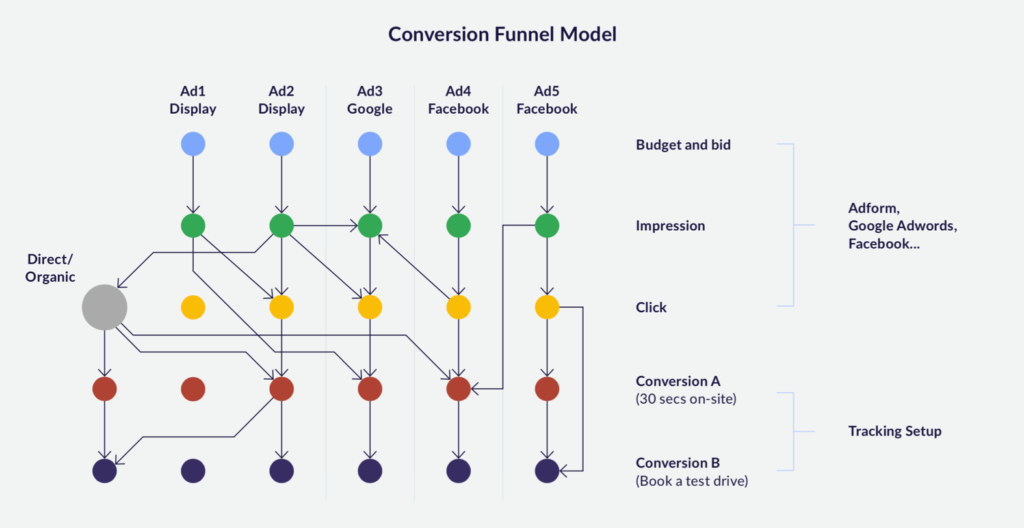
“For us, using the Nexta platform with NeOO is the key component in our strategy for converting print advertising SMBs into digital advertising ones. Thanks to their data-orientated approach and automation, purchasing within publishing has never been so easy. The element that we really love about Nexta's solution is the way it handles search advertising.” — Christian Thu, VP commercial at Amedia
All of NeOO's components are updated and re-trained daily through the ingestion and processing of all possible data points generated by live campaigns. Therefore, the AI agent behind NeOO continuously learns and self-improves in a completely autonomous fashion, without any human interference. All of this enables it to make robust and optimal decisions in a noisy and dynamic environment like online marketing, a hallmark of a real AI system.
In addition to that, NeOO leverages the data generated and experience gained from the many thousand campaigns that have been running via Nexta over time in a highly systematic way, another advantage that a human media planner simply cannot provide. Powered by Artificial Intelligence, Nexta's NeOO helps advertisers unlock the full potential of online marketing solutions in an easy, automated and optimised manner, and will change the way advertising works.

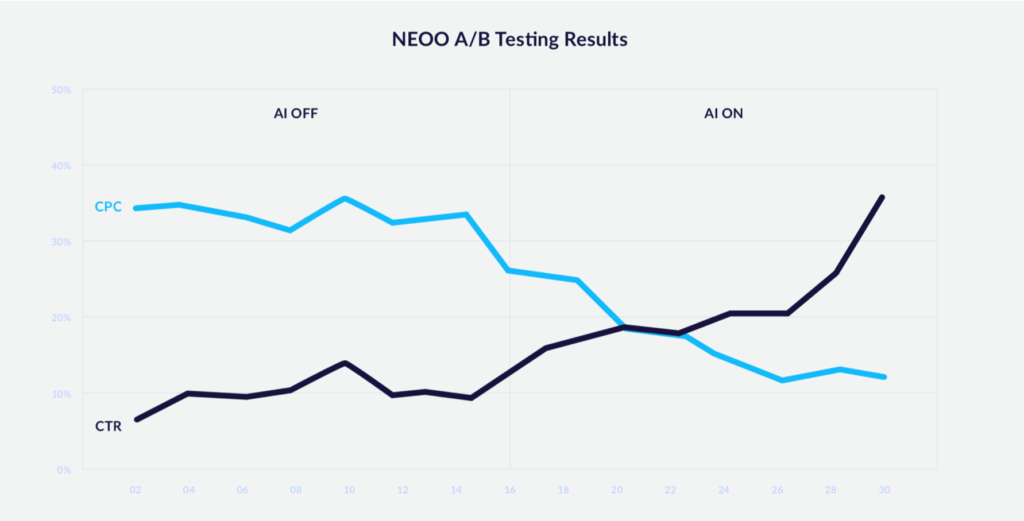
The publishers' perspective — NEOO in action
Now that we’ve delved into the technical aspects that make NeOO such an effective omnichannel solution, it’s time to find out how it has delivered on its promises. We spoke to Thomas Grondhal, chief of commercial and digital at Jysk Fynske Medier, Alexander Qvitzau Lund, director of ad technologies and ad operations at Upday, and Jan Weerts, digital transformation officer at Mediahuis Belgium, to hear why they believe that omnichannel optimisation is so important, and how NeOO has helped them enhance their omnichannel capabilities.
1. Why is omnichannel optimisation so important in digital marketing?
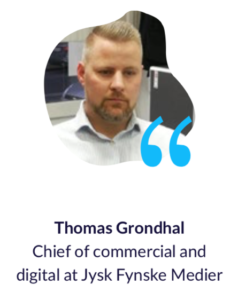 “For me, it’s a question of meeting customer demand. The days where we could simply sell our own inventory are long gone. Customers want to be on “all” platforms — from open display and SoMe channels, to Google Products. Evaluating each individual medium and platform on an ROI-based evaluation simply isn’t enough anymore — and the time it would take for small and medium advertisers to do so would be overwhelming.
“For me, it’s a question of meeting customer demand. The days where we could simply sell our own inventory are long gone. Customers want to be on “all” platforms — from open display and SoMe channels, to Google Products. Evaluating each individual medium and platform on an ROI-based evaluation simply isn’t enough anymore — and the time it would take for small and medium advertisers to do so would be overwhelming.
Omnichannel marketing is extremely important for advertisers because it collects and uses data from multiple sites, channels, and platforms to provide a far more detailed overview of their target audiences. It’s a much more cost-effective way for advertises to optimise their ad spend — which is in high focus at the moment — not only for agencies, but for small and medium businesses too.”
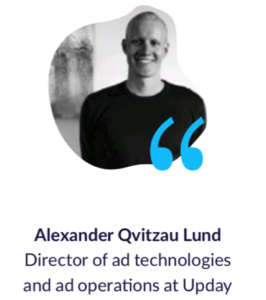 “Omnichannel optimisation is vital for advertisers because it enables them to reach consumers everywhere whilst providing information on the most affordable and best-performing inventory. This increases their campaigns’ chances of success, and helps marketers make the most of their advertising budgets.
“Omnichannel optimisation is vital for advertisers because it enables them to reach consumers everywhere whilst providing information on the most affordable and best-performing inventory. This increases their campaigns’ chances of success, and helps marketers make the most of their advertising budgets.
OO is equally valuable for publishers, allowing them to ensure that all of their inventory is monetised via advertisements (even on low-value ad placements). Furthermore, omnichannel creates a sense
of connection and alignment between otherwise disparate products and partnerships, and allows publishers to carry optimisation strategies and infrastructure over from one environment to another.”
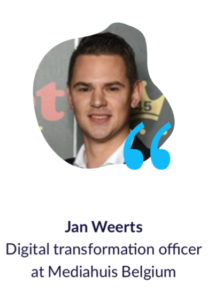 “Customers are no longer satisfied with just an ad in the newspaper or a display ad, and as the number of advertising formats on offer has increased, so too has the curiosity of the advertiser. Whilst publishers were able to offer advertisers an omnichannel solution, these early solutions didn’t always include optimisation tools, causing brands to miss out on some opportunities to reach their target audiences.
“Customers are no longer satisfied with just an ad in the newspaper or a display ad, and as the number of advertising formats on offer has increased, so too has the curiosity of the advertiser. Whilst publishers were able to offer advertisers an omnichannel solution, these early solutions didn’t always include optimisation tools, causing brands to miss out on some opportunities to reach their target audiences.
A consumer’s interest may be sparked after seeing an advertiser on Facebook. Seeing the same campaign whilst reading a news site will draw his attention further, making him more likely to search for the advertiser via Google. All 3 parties are equally important in the journey, but because it is
only Google who serves the click, it is Google who get all the credit. This biased perception has become more and more relevant in our market, so it is essential that the industry and consumers alike understand that Google couldn’t serve anywhere near as many clicks if the preliminary stages were not so supportive. It’s all about the customers’ journey.”
2. What are the main challenges to optimising across multiple channels, and how can publishers overcome these?
 “The main challenges in omnichannel are comparing investment across multiple platforms and sites, and maintaining a “red line” in communication towards target groups. Both of these require a lot of time to be spent manually monitoring and optimising campaigns. It’s hardly surprising, therefore, that for a long time both have only been options for bigger advertisers, who can afford to hire an agency to do this work.
“The main challenges in omnichannel are comparing investment across multiple platforms and sites, and maintaining a “red line” in communication towards target groups. Both of these require a lot of time to be spent manually monitoring and optimising campaigns. It’s hardly surprising, therefore, that for a long time both have only been options for bigger advertisers, who can afford to hire an agency to do this work.
We can overcome these challenges by exploring how automation and AI can help create easy access for all platforms and sites — just like Nexta is doing.”
 “Advertisers have to be wary of the differences in sizes across web, mobile, and tablet when it comes to choosing creative, and understand the performance of different creative types on different channels.
“Advertisers have to be wary of the differences in sizes across web, mobile, and tablet when it comes to choosing creative, and understand the performance of different creative types on different channels.
Accurate integration is another key challenge, and requires substantial amounts of time, resources, and expertise. The degree of challenge will depend on the type of integration — as the market moves towards more header bidding and server-sided mediation, publishers get a more diverse product portfolio, and at the same time seek to bring more types of partners into their ad ecosystem.
Conversion registration (e.g. from app to web) is also a hurdle when it comes to optimising omnichannel, and a problem that many MMPs are unable to solve at this point. This is a point of increasing frustrating for advertisers, as it impedes their ability to accumulate and compare performance reports across all categories of inventory.”
 “The biggest challenge in OO is dealing with the different performances of all channels — it’s no secret that search campaigns tend to deliver more clicks than display campaigns, nor that a display campaign will build brand awareness better than a search campaign. I think it’s very important for clients to know exactly what they want their campaign to achieve, but they mustn’t let themselves become convinced that relying on only one or two channels.
“The biggest challenge in OO is dealing with the different performances of all channels — it’s no secret that search campaigns tend to deliver more clicks than display campaigns, nor that a display campaign will build brand awareness better than a search campaign. I think it’s very important for clients to know exactly what they want their campaign to achieve, but they mustn’t let themselves become convinced that relying on only one or two channels.
The best way to pre-emptively tackle this misconception is by communicating a single campaign metric to clients that encompasses their campaigns’ results. This is because if we provide a granular report of how each channel performed, the client will naturally be drawn to the highest-performing channel, and will only want to invest in that one in future campaigns.
Omnichannel’s greatest strength is its combination of all advertising channels, so it is better to provide a comprehensive figure for all channels than to split them up and report on them individually. All channels are very complementary if used correctly in the marketing funnel.”
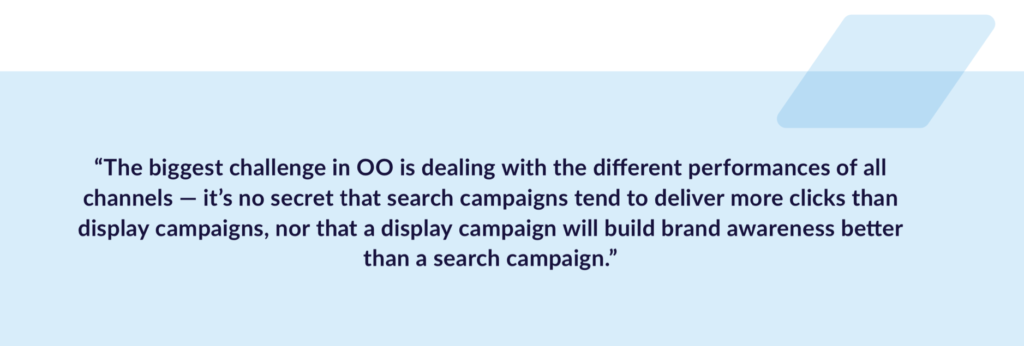
3. How has working with Nexta helped your optimisation strategy?
 “90% of the advertises we deal with at Jysk Fynske Medier are small, local shops. Taking the challenges mentioned above into consideration, it’s easy to understand why most smaller businesses have stuck to one platform or site for their advertising output.
“90% of the advertises we deal with at Jysk Fynske Medier are small, local shops. Taking the challenges mentioned above into consideration, it’s easy to understand why most smaller businesses have stuck to one platform or site for their advertising output.
By working with Nexta, we have been able to create an option for all advertises to approach true omnichannel optimisation without having to dedicate days and days doing so. In other words, we have made it possible for smaller and medium sized advertises to optimise their advertising budget.
This is an extremely important achievement considering the rapid acceleration of digital transformation, which has seen ad spend that historically went into print media. With this new option, we’ve helped to open up new opportunities to advertisers who have traditionally relied on just one channel.”
 “Whilst there is more that we’re yet to achieve, our partnership with Nexta has already proved fruitful. It has enabled us to automate campaign management optimisation in real-time, and has enhanced our ability to connect to new third-party websites, sales houses, and ad networks.
“Whilst there is more that we’re yet to achieve, our partnership with Nexta has already proved fruitful. It has enabled us to automate campaign management optimisation in real-time, and has enhanced our ability to connect to new third-party websites, sales houses, and ad networks.
Working with Nexta has also provided us with an opportunity to deliver more direct campaigns at a dynamic eCPM, which will attract more clients, generate bookings, and upsell both front and back fill inventory. Publishers should always seek out opportunities for higher yield in inventory between high premium and back fill, and this dynamic eCPM makes doing so simpler. ”
 “Since working with AdStudio [a white label solution built for Mediahuis using NeOO], we’ve seen campaign performance increase, and have become more aware of the performance of social and search media. In the past, our clients would tell us that since they already advertised via Facebook and Google, they didn’t feel that our offering was necessary for them at that time.
“Since working with AdStudio [a white label solution built for Mediahuis using NeOO], we’ve seen campaign performance increase, and have become more aware of the performance of social and search media. In the past, our clients would tell us that since they already advertised via Facebook and Google, they didn’t feel that our offering was necessary for them at that time.
With this, and other insights, we have become better equipped to inform our clients about the strengths of the combination of social, search, and display advertising on news media. Now we’re in a position where we can present testcases showing that news sites performed better and the benchmarks for social and search advertising were a lot higher in omnichannel campaigns than in those executed separately.”
4. What do you think omnichannel will look like in the future?
 “Data is still going to play a major part in omnichannel optimisation. But big Data is also under a lot of pressure from infrastructural changes and stricter regulation, such as ITP and GDPR. As cookies edge ever-closer to extermination, it will be interesting to see how cookieless targeting solutions will shape omnichannel optimisation. In the meantime, we’re continuing to look for ways to utilise our data more effectively whilst still advertising and optimising campaigns towards specific target groups.”
“Data is still going to play a major part in omnichannel optimisation. But big Data is also under a lot of pressure from infrastructural changes and stricter regulation, such as ITP and GDPR. As cookies edge ever-closer to extermination, it will be interesting to see how cookieless targeting solutions will shape omnichannel optimisation. In the meantime, we’re continuing to look for ways to utilise our data more effectively whilst still advertising and optimising campaigns towards specific target groups.”
 “Facebook and Google have been omnichannel for years now, which has led to them growing to dominate the market. The number of DSPs and SSPs has significantly decreased over time through mergers and acquisitions, leaving few intermediaries to connect demand and supply side. As a result, omnichannel optimisation will become more important than ever, as advertisers will need to be able to understand where their ad dollars will be best spent.”
“Facebook and Google have been omnichannel for years now, which has led to them growing to dominate the market. The number of DSPs and SSPs has significantly decreased over time through mergers and acquisitions, leaving few intermediaries to connect demand and supply side. As a result, omnichannel optimisation will become more important than ever, as advertisers will need to be able to understand where their ad dollars will be best spent.”
 “Having an omnichannel advertising model will become even more important in the future, and being on hand throughout the entire advertising journey will become of key importance to clients. That’s also why Mediahuis, together with Pebble, Telenet, Proximus, SBS, and De Buren have launched joint venture to serve clients across all types of media (newspapers, audio, video, television, social, display, magazines, and so on). Our aspiration is for this joint company to become our clients’ single point of (advertising) contact, and effective omnichannel optimisation will be crucial to helping us achieve this. ”
“Having an omnichannel advertising model will become even more important in the future, and being on hand throughout the entire advertising journey will become of key importance to clients. That’s also why Mediahuis, together with Pebble, Telenet, Proximus, SBS, and De Buren have launched joint venture to serve clients across all types of media (newspapers, audio, video, television, social, display, magazines, and so on). Our aspiration is for this joint company to become our clients’ single point of (advertising) contact, and effective omnichannel optimisation will be crucial to helping us achieve this. ”


 Download Report
Download Report 




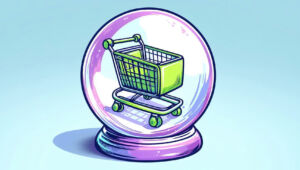

Follow ExchangeWire